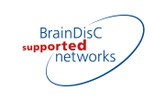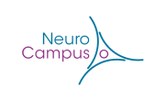Tomislav Milekovic, Basic Neurosciences, Université de Genève | Neuroprostheses based on intracortical recordings of neural activity for restoration of movement and communication of people with paralysis
| When |
Apr 24, 2018
from 05:15 PM to 06:15 PM |
|---|---|
| Contact Name | Carsten Mehring |
| Add event to calendar |
|
Abstract
Paralysis has a severe impact on a patient’s quality of life and entails a high emotional burden and life-long social and financial costs. Restoring movement and independence for the paralyzed remains a challenging clinical problem, currently with no viable solution. Recent demonstrations of intracortical brain-computer interfaces, neuroprosthetic devices that create a link between a person and a computer based on a person’s brain activity, have brought hope for their potential to restore movement and communication1-9. While the intracortical brain-computer interfaces have steadily improved over the last decade, our recent success in linking brain activity with the newly developed techniques for spinal cord stimulation10-13 look to revolutionize locomotor rehabilitation.
Specifically, our brain-spine interface restored weight-bearing locomotion of the paralyzed leg as early as six days post-injury in macaques14. New approaches in identifying neural features and designing decoding algorithms, which transform neural signals into computer commands, aim to deliver both stable and accurate control over clinically relevant periods of several months4. To this end, we developed signal processing and decoder calibration approaches that enabled a person with long-stable tetraplegia to control a communication brain-computer interface for 138 days with an unchanged decoder. Preliminary clinical studies suggest that these concepts and technologies are directly translatable to therapeutic strategies for people with paralysis.
Literature
- Ajiboye et al. Restoration of reaching and grasping movements through brain-controlled muscle stimulation in a person with tetraplegia: a proof-of-concept demonstration. The Lancet, (2017)(Link)
- Wenger et al. Spatiotemporal neuromodulation therapies engaging muscle synergies improve motor control after spinal cord injury. Nat Med 22, 138-145, (2016)(Link)
- Capogrosso et al. A brain–spine interface alleviating gait deficits after spinal cord injury in primates. Nature 539, 284-288, (2016).(Link)









